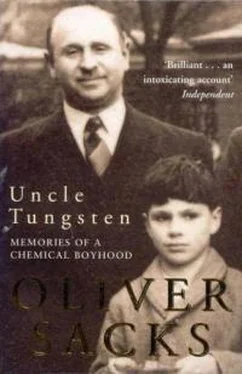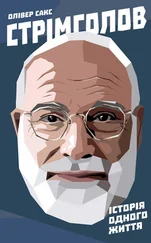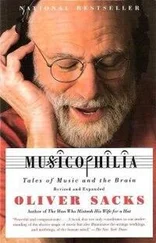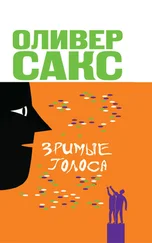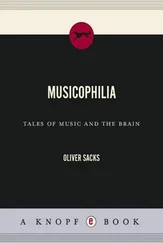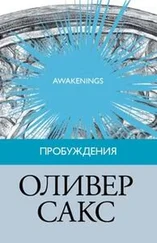The great number of philosophical persons to whom this question has been put have answered in the affirmative. They agree with metals in opacity, lustre, malleability, conducting powers as to heat and electricity, and in their qualities of chemical combination.
After his success in isolating the first alkali metals, Davy turned to the alkaline earths and electrolyzed these, and within a few weeks he had isolated four more metallic elements – calcium, magnesium, strontium, and barium – all highly reactive and all able to burn, like the alkali metals, with brilliantly colored flames. These clearly formed another natural group.
Pure alkali metals do not exist in nature; nor do the elemental alkaline earth metals – they are too reactive and instantly combine with other elements. [23]What one finds instead are simple or complex salts of these elements. While salts tend to be nonconducting when crystalline, they can conduct an electric current well if dissolved in water or melted; and will indeed be decomposed by an electric current, yielding the metallic component of the salt (e.g., sodium) at one pole, and the nonmetallic element (e.g., chlorine) at the other. This implied to Davy that the elements were contained in the salt as charged particles – why else should they be attracted to the electrodes? Why did sodium always go to one electrode and chlorine to the other? His pupil, Faraday, was later to call these charged particles of an element ‘ions’, and further distinguished the positive and negative ones as ‘cations’ and ‘anions.’ Sodium, in its charged state, was a strong cation, and chlorine, in its charged state, one of the strongest anions.
For Davy, electrolysis was a revelation that matter itself was not something inert, held together by ‘gravity’, as Newton had thought, but was charged and held together by electrical forces. Chemical affinity and electrical force, he now speculated, were one and the same. For Newton and Boyle there had been only one force, universal gravity, holding not only the stars and planets together, but the very atoms of which they were composed. Now, for Davy, there was a second cosmic force, a force no less potent than gravity, but operating at the tiny distances between atoms, in the invisible, almost unimaginable, world of chemical atoms. Gravity, he felt, might be the secret of mass, but electricity was the secret of matter.
* * *
Davy loved to conduct experiments in public, and his famous lectures, or lecture-demonstrations, were exciting, eloquent, and often literally explosive. His lectures moved from the most intimate details of his experiments to speculation about the universe and about life, delivered in a style and with a richness of language that nobody else could match. [24]He soon became the most famous and influential lecturer in England, drawing huge crowds that blocked the streets whenever he lectured. Even Coleridge, the greatest talker of his age, came to Davy’s lectures, not only to fill his chemical notebooks, but ‘to renew my stock of metaphors.’
There still existed, in the early nineteenth century, a union of literary and scientific cultures – there was not the dissociation of sensibility that was so soon to come – and Davy’s period at Bristol saw the start of a close friendship with Coleridge and the Romantic poets. Davy himself was writing (and sometimes publishing) a good deal of poetry at the time; his notebooks mix details of chemical experiments, poems, and philosophical reflections all together; and these did not seem to exist in separate compartments in his mind. [25]
There was an extraordinary appetite for science, especially chemistry, in these early, palmy days of the Industrial Revolution; it seemed a new and powerful (and not irreverent) way not only of understanding the world but of moving it to a better state. Davy himself seemed to embody this new optimism, to be at the crest of a vast new wave of scientific and technological power, a power that promised, or threatened, to transform the world. He had discovered half a dozen elements, as a start, suggested new forms of lighting, made important innovations in agriculture, and developed an electrical theory of chemical combination, of matter, of the universe itself – all before the age of thirty.
* * *
In 1812, Davy, the son of a wood-carver, was knighted for his services to the empire – the first scientist so honored since Isaac Newton. In the same year he married, but this did not seem to distract him from his chemical researches in the least. When he set out for an extended honeymoon on the Continent, determined to do experiments and meet other chemists wherever he went, he brought along a good deal of chemical apparatus and various materials (‘an airpump, an electrical machine, a voltaic battery… a blow-pipe apparatus, a bellows and forge, a mercurial and water gas apparatus, cups and basins of platinum and glass, and the common reagents of chemistry’) – as well as his young research assistant, Michael Faraday. (Faraday, then in his early twenties, had followed Davy’s lectures raptly, and wooed Davy by presenting him with a brilliantly transcribed and annotated version of them.) In Paris, Davy had a visit from Ampere and Gay-Lussac, who brought with them, for his opinion, a sample of a shiny black substance obtained from seaweed, with the remarkable property that when heated, it did not melt, but turned at once into a vapor of a deep violet color. A year earlier, Davy had identified Scheele’s greenish yellow ‘muriatic acid air’ as a new element, chlorine. Now, with his enormous feeling for the concrete [26]and his genius for analogy, Davy sensed that this odoriferous, volatile, highly reactive black solid might be another new element, an analog of chlorine, and soon confirmed that it was. He had already tried, unsuccessfully, to isolate Lavoisier’s ‘fluoric radical’, realizing that the element it contained, fluorine, would be a lighter and even more active analog of chlorine. But he also felt that the gap in physical and chemical properties between chlorine and iodine was so great as to suggest the existence of an intermediate element, as yet undiscovered, between them. (There was indeed such an element, bromine, but it fell not to Davy to discover it, but to a young French chemist, Balard, in 1826. Liebig himself, it turned out, had actually prepared the fuming brown liquid element before this, but misidentified it as ‘liquid iodine chloride’; after hearing of Balard’s discovery, Liebig put the bottle in his ‘cupboard of mistakes.’)
From France the wedding party moved by stages to Italy, with experiments along the way: collecting crystals from the rim of Vesuvius; analyzing gas from natural vents in the mountains (it turned out to be, Davy found, identical with marsh gas, or methane); and, for the first time, performing a chemical analysis of paint samples from old masterworks (‘mere atoms’, he announced).
In Florence, he experimented with burning a diamond under controlled conditions, with a giant magnifying glass. Despite the demonstration of diamond’s inflammability by Lavoisier, Davy had been reluctant, up to this point, to believe that diamond and charcoal were, in fact, one and the same element. It was rather rare for elements to have a number of quite different physical forms (this was before the discovery of red phosphorus, or the allotropes of sulphur). Davy wondered if these might represent different forms of ‘aggregation’ of the atoms themselves, but it was only much later, with the rise of structural chemistry, that this could be defined (the hardness of diamond, it was then shown, was due to the tetrahedral form of its atomic lattices, the softness and greasiness of graphite due to the packing of its hexagonal lattices in parallel sheets).
Читать дальше
